
JaneApp Data Security Features: How Your Clinic’s Information Stays Protected
JaneApp Data Security Features: How Your Clinic’s Information Stays Protected Takeaways Jane is HIPAA- and PIPEDA- compliant Data is encrypted, whether at rest or in
Start Feeling Better In As Few As 3 Visits.

There are about 8.6 million sports-related injuries every year in the United States according to the CDC. For these injured athletes, what might you guess is the number one thing they want to do after getting hurt?
They want to get back out there. On the field. On the court. On the ice. At the track. At the gym. For athletic-minded people, whether playing professionally, at college, in school, or as a casual competitor, being out there is number one. Nothing is more frustrating than having to stay home or on the bench to deal with an injury.
Sports medicine has emerged as a specialty for exactly this reason.
Sport physiotherapists are trained to recognize and understand the specific motions and exertions required in individual sports that put extra strain upon certain joints, muscles, and ligaments.
If you’re an athlete at any level, form, or stage of life, you understand all this and that’s why you’re here. You’re here either because you’re tired of being injured and want to know what you can to do restore your previous level of performance. You may have undergone a surgery for a sport related injury, or you want to prevent future injuries from happening and want to talk to a specialist who can actually help you achieve that.
You’re about to learn the basics of sports medicine. What it is, how it relates to sports physiotherapy, how it can help you, and much more. Use the table of contents below or just keep reading!
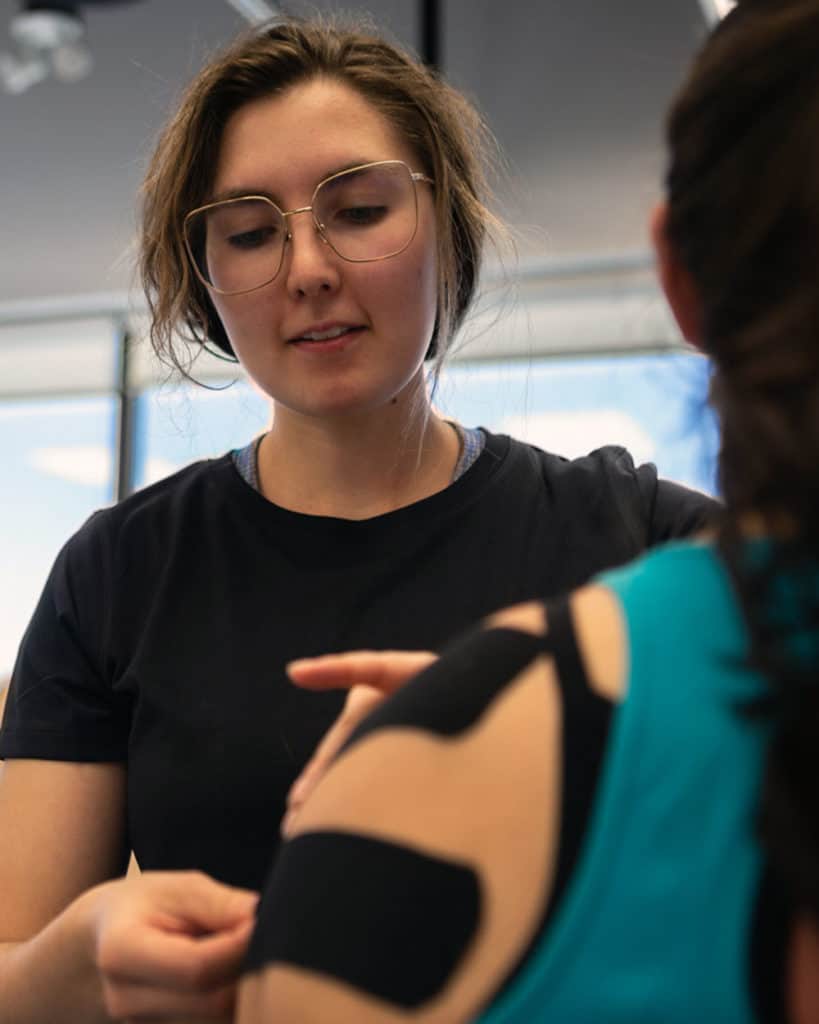
Tell us what hurts, and we will treat your pain in the shortest time possible. Get effective treatment for your condition in less than 30 minutes so you can get back to doing what you live… pain-free.
Get a personalized care plan so you can feel better in as few as 3 visits. We use advanced therapy techniques proven to ease pain, accelerate recovery, improve mobility and overall health.
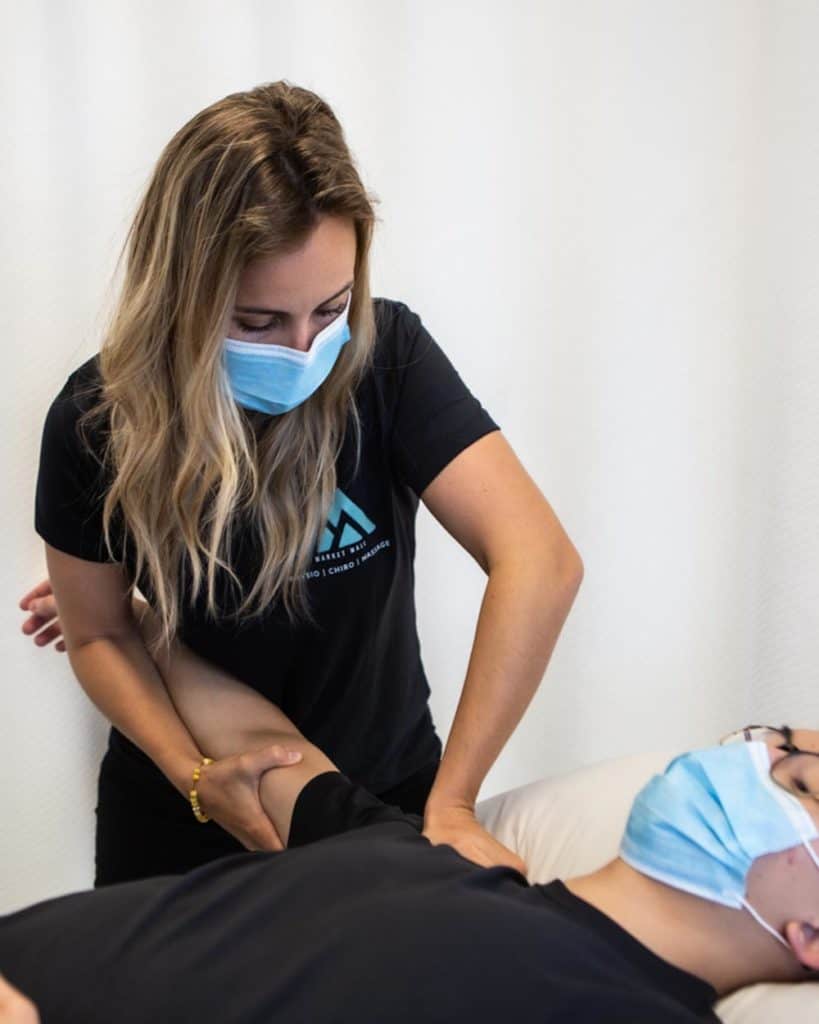
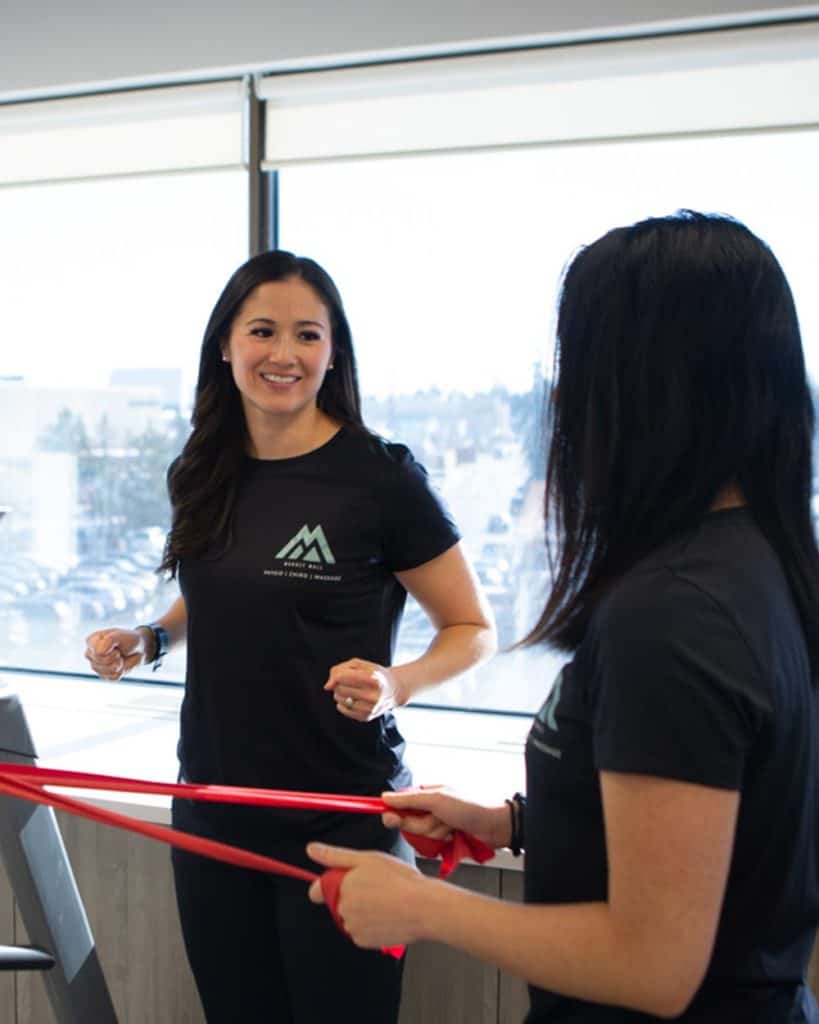
Our team of licensed physiotherapists, chiropractors, registered massage therapists are professionals and in human anatomy and biomechanics. You will get the perfect care plan to target the root of your pain so you can get back to doing what you love, everyday!
This appointment is your opportunity to tell us what hurts and discover whether physiotherapy is a good fit for you! During this session, you will talk with a physiotherapist on a phone call (or online) and create the right care plan specifically for your pain. There is no obligation, this session is only to find out if physiotherapy can help you getting back to doing the things you love in life.
If you’re like most you don’t want to wait days or weeks to get treated for your pain. And you don’t want to have to spend your time calling nearby clinics to find the one who can see you the fastest.
That’s where PainHero comes In – Canada’s largest network of physiotherapists, chiropractors, and registered massage therapists.
Our Platform is used by clinics where they post their open appointment times. So you can quickly compare availability and wait times for clinics near you without having to pick up the phone. Then book an appointment within seconds and even see someone that day if you want. So you can get back to doing the things you love faster.
Plus unlike other sites who let anyone on or just rely on google reviews. We hand pick clinics based on a 50-point inspection, which includes everything from checking reviews, ratings, reputation, history, complaints, satisfaction, trust, cost, and general excellence.
Improve the way your body moves so you can continue to do the things you love. PainHero is Canada’s largest network of physiotherapists, chiropractors, and registered massage therapists. Our mission is to make it easy for you to find the top clinics in your community. We handpick the top clinics using our 50 point inspection based on patient reviews, complaints, and patient outcomes.
Whether you’re seeking pain relief or preventative care, you can expect our patient-centric approach to be new and different from any healthcare experience you’ve had before. Perhaps even life-changing.
1460+
Clinics
2172+
Caring Therapists
2M+
Patient Visits
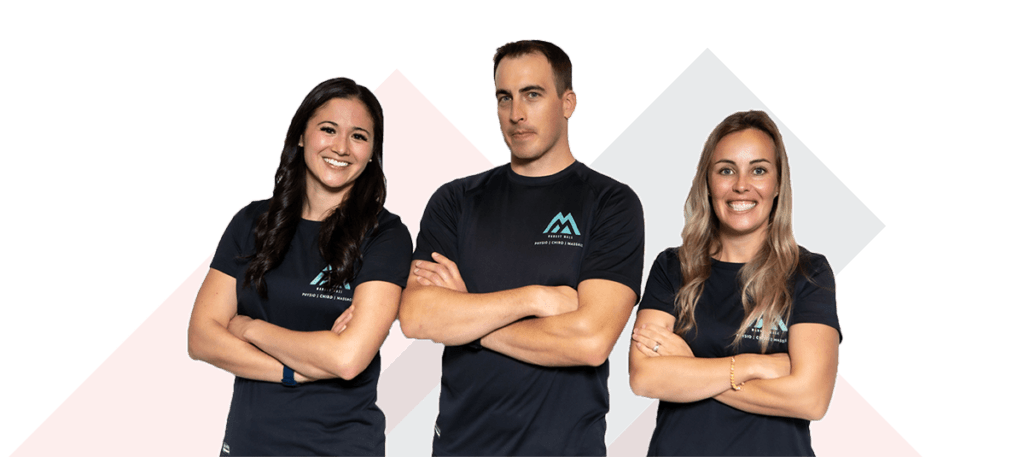

Sports medicine is a somewhat broad term that includes a variety of specialists all bound by one commonality – serving patients who take part in athletics. They either work exclusively with athletes, or they have the skills to provide targeted care to people who experience athletic related injuries.
Under this broad group you will find sports medicine specialists such as sports medicine doctors, physiotherapists, sports massage therapists, and athletic trainers.
Some of these work with sports teams or athletic departments, some with individuals. Sometimes more than one specialist works with the same person or team, as their various skillsets and strengths complement each other.
The goal of sports medicine specialists is clear: Treat injuries that have already happened, restore the athlete to their fullest potential, and work to prevent future injuries from occurring in ongoing athletic activity.
You could seek help from a sports medicine specialist for any of the following reasons:
And with that knowledge they can recommend treatments that will help someone with a sports injury to regain their full strength and return to the field ready to compete.
They can also teach you how to apply proper mechanics when competing in your sport so you are moving your joints, muscles, and ligaments in the safest and best ways. Plus, if you have a specialist on site during your competitions they can assess and possibly treat injuries on the spot, depending on the severity.
For example, suppose you’ve had an ACL injury and your knee had to be reconstructed through surgery. The sports doctor understands that your ACL is what allows you to run, pivot, kick, and change directions. That’s why this is one of the most common knee ligaments injured in sports.
After the surgery is performed a sports physiotherapist can help you rebuild your strength and repair the damage so you can return to the field.
Check out this great exercise which is ideal for running-specific strength, courtesy of Physio Plus Health Group.

Sports injuries can impact so many different parts of your body and can occur in just about every sport. Some common injuries include:
Sports medicine can treat or help you manage all of these conditions and injuries.
So what does sport rehab look like with a physiotherapist?
The main goal is to develop a program that is specific to your body and sport. The plan will not just address pain but restore functionality to your muscles and joints, rebuild your strength, and prepare you for the specific movements in your sport.
In implementing such a program, sports physiotherapists will use techniques like exercise therapy, dry needling, taping, shockwave therapy, and other specific interventions to address your unique deficits.
Get help from a sports medicine specialist if an injury is preventing you from playing and competing. The specialist can also teach you how to safely train while you rehab from your injury. They create a return to play plan with you to help you get back to your sport.
Sometimes you have an injury but need to play just one more game, such as the final game in a tournament. Depending on the injury, a sports medicine specialist may be able to get your body ready to play that last game before you can devote more extensive time to healing and restoring from your injury afterward.
Running tips courtesy of Peak Health & Performance (Read the caption)
Find out whether physiotherapy can help you get back to doing the things you love in life.
There is a lot of overlap between these professions.
Both specialists work to help you prevent injuries, manage pain, and rehabilitate injuries to your muscles and bones so you can experience the full range of motion and physical independence you need to get back to your sport. Both create personalized treatment plans to achieve this. Neither requires a referral from a physician.
Both are very familiar with the musculoskeletal system, including muscles, ligaments, tendons, and bones. They know how to assess sports injuries and develop sports rehab plans.
And both use similar treatment methods, including mobilizations, sports massage, taping, stretching, electrotherapy, exercise training and education.
That’s a lot in common. But as you’ll see, the differences are significant. Here are the main ones you need to know:
Who you end up seeing may well depend on who your insurance will cover, because both are able to help treat many of the same conditions.

Whether you golf, run, swim, or play sports like basketball, hockey, or racquetball, the great majority of sports injuries you can suffer will be treatable by a sports physiotherapist.
Here are some of the most common sports injuries that can be treated:
Check out these 4 simple exercises by Aurora Sports Medicine Professionals for a healthy golf swing:
5 simple stretches to start your golf warmup courtesy of Fusion Physiotherapy & Wellness Centre
Golf forearm warmups courtesy of INNOVA Integrated Wellness Centre
Exercises to help you improve your golf game courtesy of Physio Sport Plus
Great warmups you can use to prepare before you go on your run, play your sport, and even do before a great workout courtesy of Sheddon Physiotherapy Sports Clinic
As long as it’s not a fracture or an injury that requires immediate attention, what should you do to help your body heal from a sports injury?
As an athlete or highly active person, you need more than ‘rest and drink plenty of fluids.’
One sports physiotherapist developed a 9-part response to sports injuries – things you can do yourself, or with the help of a physiotherapist.
Their system is an acronym – PEACE and LOVE.
Protect your body by avoiding activities and motions that increase your pain
Elevate your injured area, if possible, above your heart to reduce inflammation and bring down swelling
Anti-inflammatories consult a doctor before using these, but they can help manage your pain
Compress the injured area with taping or elastic bandages to reduce swelling
Educate yourself about your injury
Load as you rehabilitate, as a bit of loading is helpful. A physiotherapist can help you with this.
Optimism: Be positive and confident about your ability to heal!
Vascularisation: Look for cardio exercises that don’t cause pain, and start doing them regularly. Research has shown even hopping on a stationary bike with a shoulder injury can help the body in healing.
Exercise without aggravating symptoms to restore your strength and mobility faster than you would just laying around.
Kinesiology tape was created with the goal of providing support and helping reduce pain and swelling without compromising any range of motion or athletic performance. It achieves this in part by its extreme stretchiness. The original tape was a blend of cotton and nylon, designed to blend with your skin’s elasticity.
Unlike devices such as knee braces which can limit motion, kinesiology tape allows you to move through your full range when competing. Sports taping is also water resistant and can stay on your body for days, even through a shower.
How and why does sports taping work?
The theory behind it is that taping gives sensory support to the area that is injured. This ultimately helps your brain better connect with the injured area so intense muscle guarding, compensation, or pain can lessen. This can help you feel and perform better.
It is also believed that sports taping increases the circulation of blood and lymphatic fluid, which reduces swelling.
How do sports physiotherapists use kinesiology tape?
They tend to combine it with their other treatment methods. By itself taping can only make so much of a difference. But, in combination with stretching, strengthening, dry needling, and other sports physical therapy strategies, taping can help reduce your long-term pain and swelling so you can start getting back to optimal movement as soon as possible.
Your best first step is to look for someone in your area who identifies themselves as a sports medicine specialist. If you want to visit a clinic or hospital, seek a physiotherapist. If you want someone to travel with you or your team, look for an athletic therapist. If you have a severe injury, such as a fracture, look for a sports physician first.
If you find yourself with too many choices, try to find someone who has more experience with your particular sport or athletic activity.
Use what you’ve learned from this guide to find the best sports medicine specialist for you.
If your torn ACL goes untreated, you may experience persistent instability in your knee as the ligament is a major stabilizer of the joint. This may lead to pain and even may cause early-onset osteoarthritis.

JaneApp Data Security Features: How Your Clinic’s Information Stays Protected Takeaways Jane is HIPAA- and PIPEDA- compliant Data is encrypted, whether at rest or in

JaneApp Reporting and Analytics: How Clinics Can Track Growth and Performance Takeaways Jane’s reports are super underrated, they give you real insight into how your
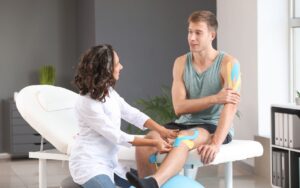
JaneApp Customer Support: How to Get the Help Your Clinic Needs Takeaways Use the in-app chat first if you can Email is fine, but be
It depends on the injury, the requirements of the sport, and the overall cost vs. benefit of playing. If it is the championship finals and you aren’t quite 100% rehabilitated from your injury there may be a chance. Your sport physiotherapist will assess your physiological, structural, and psychological readiness to return to play, making sure your health and safety is the first priority but also understanding the importance of playing your sport.
The short answer is anyone! If you keep getting aches and pains at the 4km mark with your journey to 5km runs then you can see a sport physio. Sport physiotherapists are adaptable to all levels of sporting ability from weekend warriors to professional levels.
It depends on the injury. A simple strain or sprain may take 6-12 weeks whereas a broken bone or surgery may be 6-12 months. Individualized factors play a big part in this including the tissue that has been damaged, what sport you are returning to, and how long it takes to reach specific performance marker milestones.
Your sport physiotherapist will keep you motivated and inspired throughout your rehabilitation so however long it takes the time will fly by.
Sports Medicine Physiotherapy is one of several possible methods for relieving pain that do not rely on prescription medications and all the side effects and baggage they come with. Not to mention that most drugs can only mask pain, but rarely address root causes. Find a clinic if you are suffering from muscle tightness, soreness, or pain to improve your quality of life, today.
